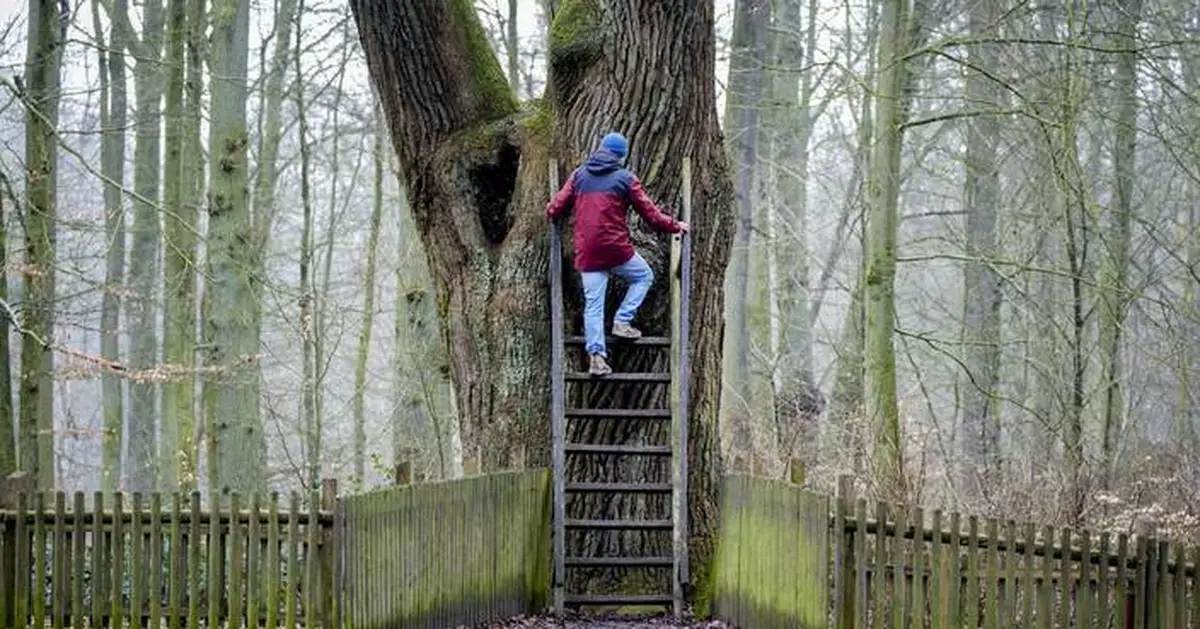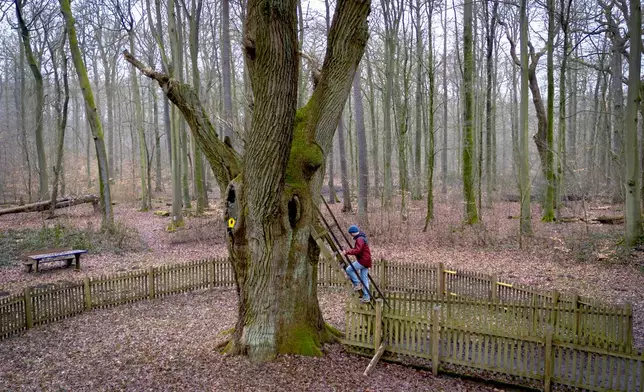EUTIN, Germany (AP) — It's timber over Tinder in a forest in northern Germany where the Bridegroom's Oak has connected lovers for more than a century.
Known as “Bräutigamseiche” in German, the Bridegroom’s Oak has a famous knothole that's been used as a mailbox since 1892. It even has its own postal code in the Dodau Forest some 250 kilometers (155 miles) north of Berlin.
Click to Gallery
A passer by climbs up a ladder of the Bridegroom's Oak which has a famous knothole that has been used as a mailbox since 1892, in Dodau forest, near Eutin, northern Germany, Saturday, March 1, 2025. (AP Photo/Michael Probst)
Passers by look at the Bridegroom's Oak which has a famous knothole that has been used as a mailbox since 1892, in Dodau forest, near Eutin, northern Germany, Saturday, March 1, 2025. (AP Photo/Michael Probst)
A letter posted in a hole in the Bridegroom's Oak which has a famous knothole that has been used as a mailbox since 1892, in Dodau forest, near Eutin, northern Germany, Saturday, March 1, 2025. (AP Photo/Michael Probst)
A passer by climbs up a ladder of the Bridegroom's Oak which has a famous knothole that has been used as a mailbox since 1892, in Dodau forest, near Eutin, northern Germany, Saturday, March 1, 2025. (AP Photo/Michael Probst)
A letter posted in a hole in the Bridegroom's Oak which has a famous knothole that has been used as a mailbox since 1892, in Dodau forest, near Eutin, northern Germany, Saturday, March 1, 2025. (AP Photo/Michael Probst)
A passer by climbs up a ladder of the Bridegroom's Oak which has a famous knothole that has been used as a mailbox since 1892, in Dodau forest, near Eutin, northern Germany, Saturday, March 1, 2025. (AP Photo/Michael Probst)
Mail carriers from the German postal service act as Cupid, delivering 50 to 60 letters to the knothole each month. They must climb a ladder to reach the arboreal mailbox about 3 meters (10 feet) up the 25-meter (82-foot) -tall tree that's more than 500 years old.
Visitors to the tree can leaf through the missives, some of which are mailed from other continents, and choose whether to become postal paramours with any of the letter-writers.
“The resulting pen pal relationships have even led to a few marriages,” the postal service says.
The oak was first used as a waystation between a forester's daughter and a chocolate manufacturer from Leipzig, according to the postal service. The forester initially opposed the courtship, so the couple left love letters for each other in the knothole.
They ultimately married, with the forester's permission, under the oak's leaves in 1892.
Send your own love letter to: Bräutigamseiche, Dodauer Forst, 23701 Eutin, Germany.
__
Dazio reported from Berlin.

A passer by climbs up a ladder of the Bridegroom's Oak which has a famous knothole that has been used as a mailbox since 1892, in Dodau forest, near Eutin, northern Germany, Saturday, March 1, 2025. (AP Photo/Michael Probst)
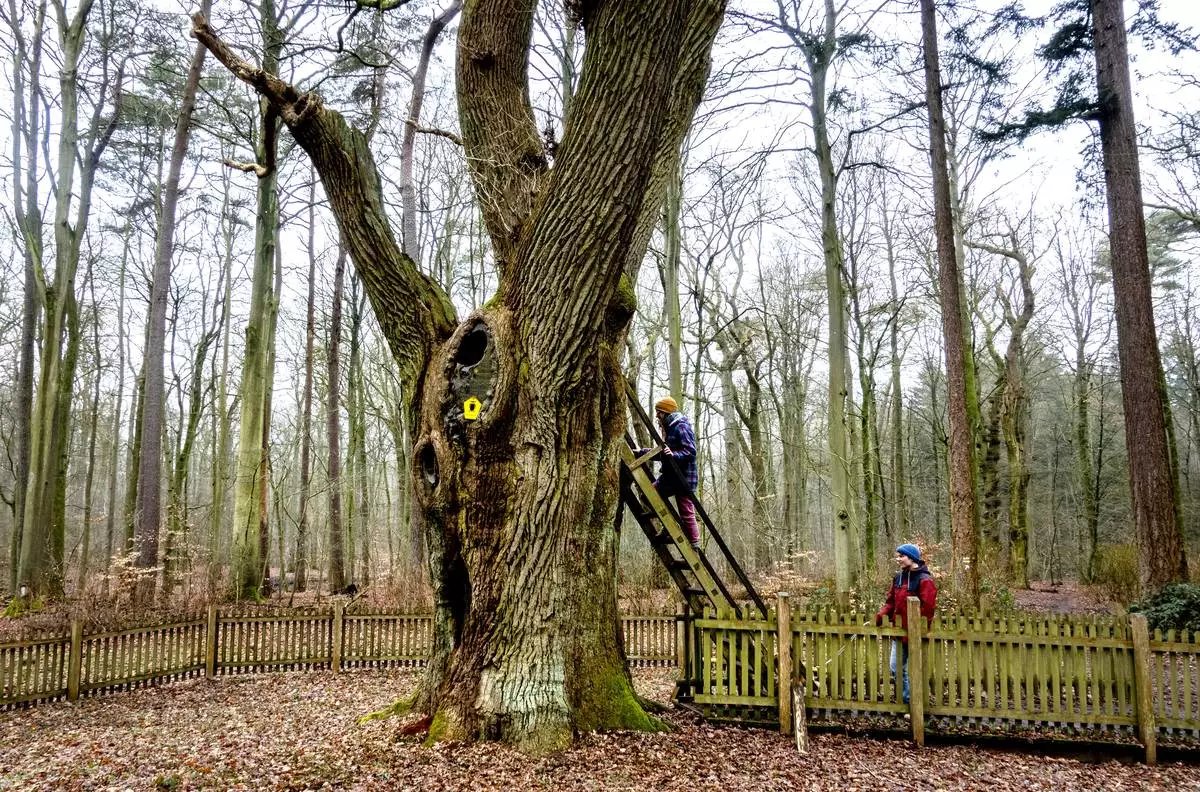
Passers by look at the Bridegroom's Oak which has a famous knothole that has been used as a mailbox since 1892, in Dodau forest, near Eutin, northern Germany, Saturday, March 1, 2025. (AP Photo/Michael Probst)
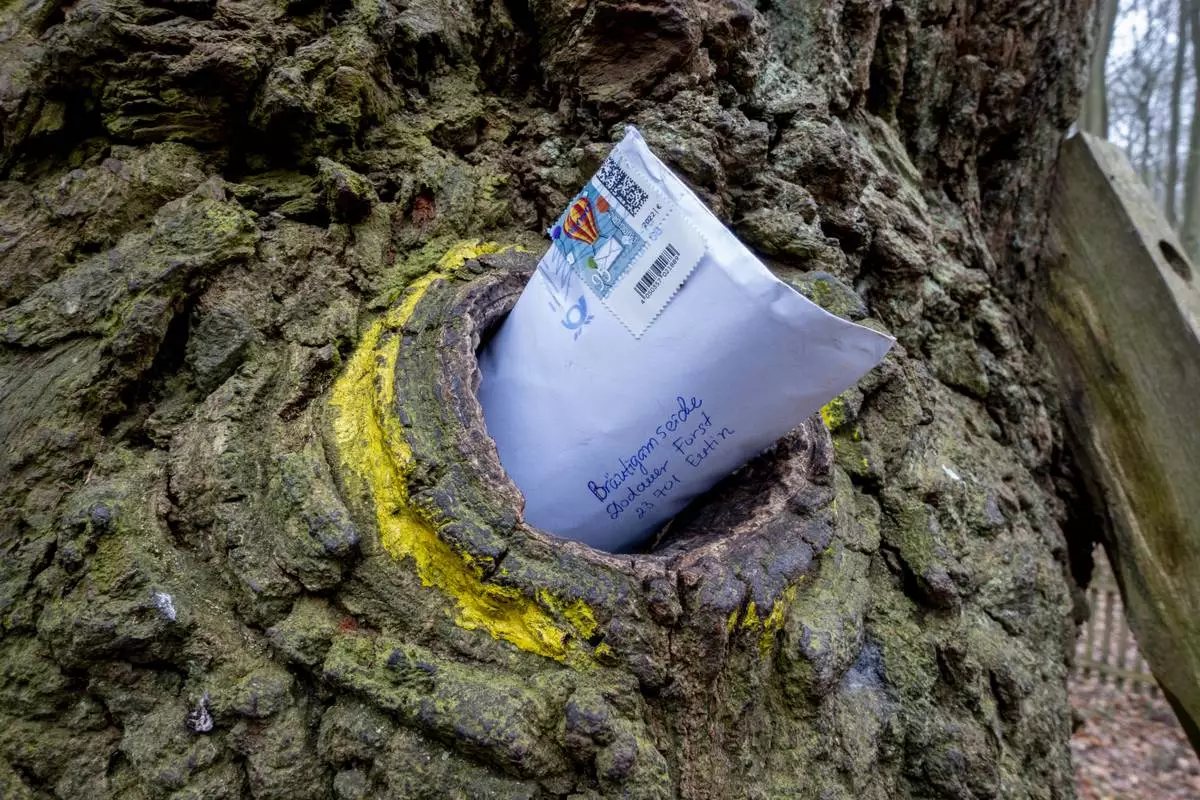
A letter posted in a hole in the Bridegroom's Oak which has a famous knothole that has been used as a mailbox since 1892, in Dodau forest, near Eutin, northern Germany, Saturday, March 1, 2025. (AP Photo/Michael Probst)
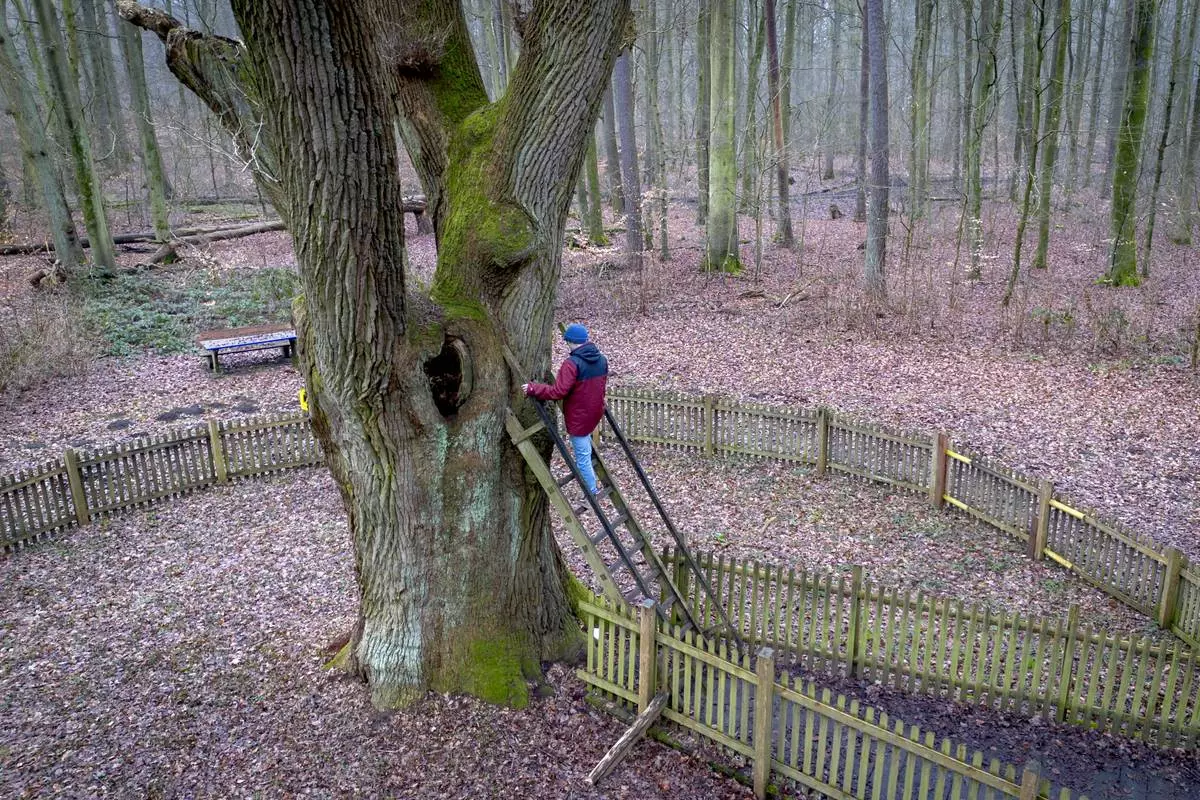
A passer by climbs up a ladder of the Bridegroom's Oak which has a famous knothole that has been used as a mailbox since 1892, in Dodau forest, near Eutin, northern Germany, Saturday, March 1, 2025. (AP Photo/Michael Probst)
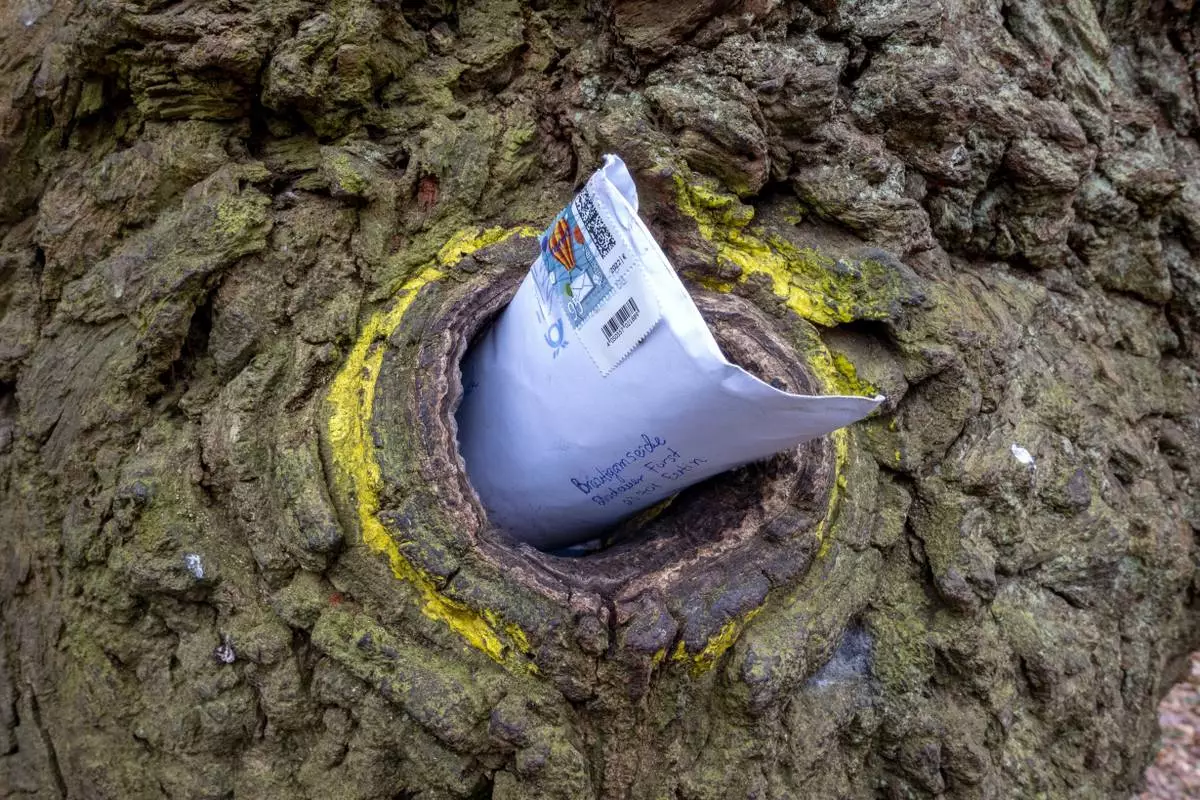
A letter posted in a hole in the Bridegroom's Oak which has a famous knothole that has been used as a mailbox since 1892, in Dodau forest, near Eutin, northern Germany, Saturday, March 1, 2025. (AP Photo/Michael Probst)
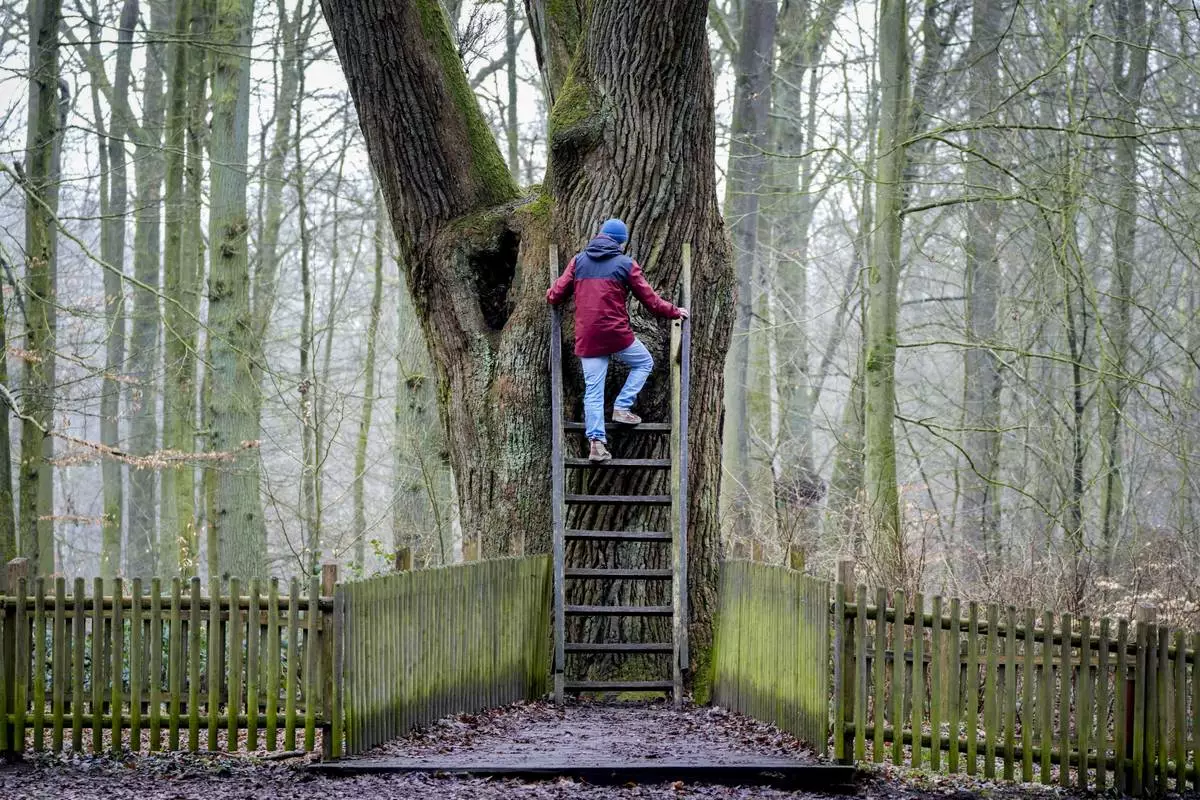
A passer by climbs up a ladder of the Bridegroom's Oak which has a famous knothole that has been used as a mailbox since 1892, in Dodau forest, near Eutin, northern Germany, Saturday, March 1, 2025. (AP Photo/Michael Probst)
Halley's comet swings near Earth every 75 years. But debris left by the comet leads to two major meteor showers every year including the Eta Aquarids.
When this meteor shower lights up the night sky, “you'll know that Earth is crossing the path of the most famous comet,” said Shauna Edson of the Smithsonian's National Air and Space Museum.
The Eta Aquarids are “pretty fast meteors” said NASA's Bill Cooke.
During Tuesday morning’s peak, expect to see 10 to 15 meteors per hour in ideal viewing conditions, said Cooke.
However, the moon will be nearly two-thirds full, which will likely reduce visibility.
Viewing lasts until May 28. Here’s what to know about the Eta Aquarids and other meteor showers.
As the Earth orbits the sun, several times a year it passes through debris left by passing comets and sometimes asteroids. The source of the Eta Aquarids is debris from Halley's comet.
When these fast-moving space rocks enter Earth’s atmosphere, the debris encounters new resistance from the air and becomes very hot, eventually burning up.
Sometimes the surrounding air glows briefly, leaving behind a fiery tail — the end of a “shooting star.”
You don’t need special equipment to see the various meteor showers that flash across annually, just a spot away from city lights.
The best time to watch a meteor shower is in the early predawn hours when the moon is low in the sky.
Competing sources of light — such as a bright moon or artificial glow — are the main obstacles to a clear view of meteors. Cloudless nights when the moon wanes smallest are optimal viewing opportunities.
And keep looking up, not down. Your eyes will be better adapted to spot shooting stars if you aren’t checking your phone.
The next major meteor shower, the Southern Delta Aquarids, peaks in late July.
The Associated Press Health and Science Department receives support from the Howard Hughes Medical Institute’s Science and Educational Media Group. The AP is solely responsible for all content.
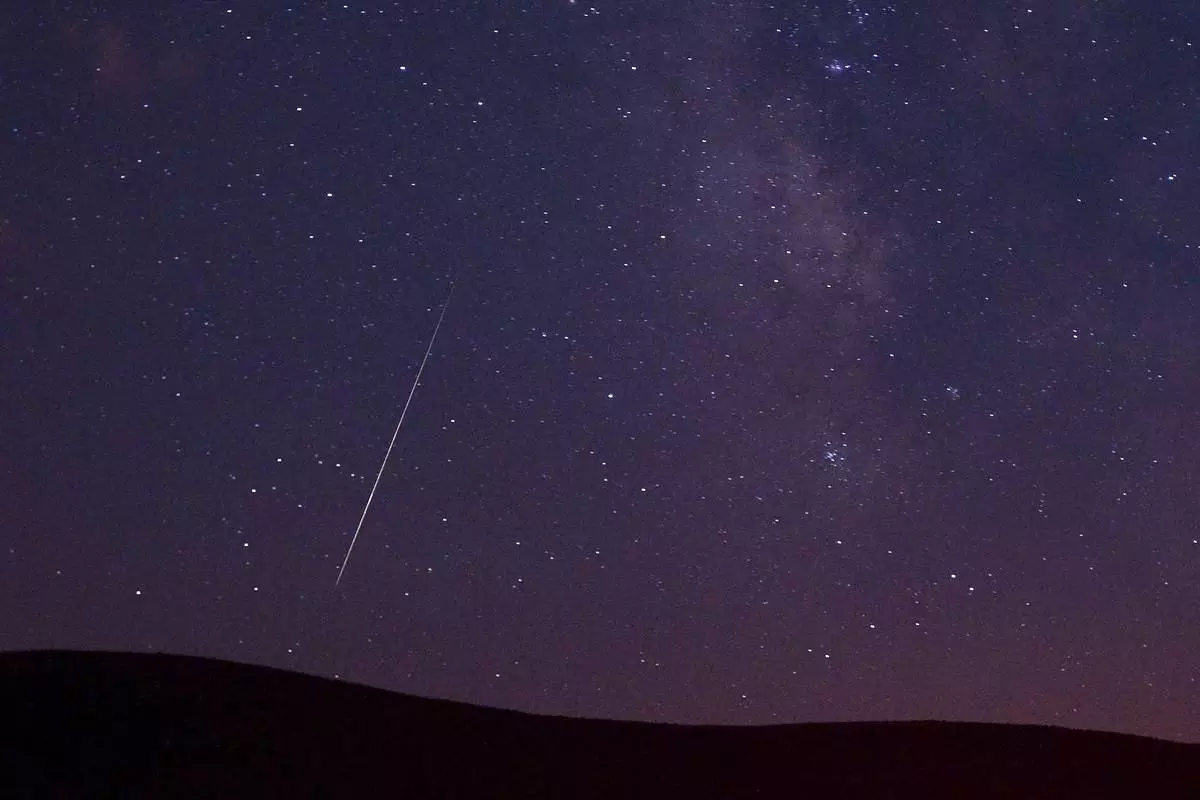
FILE - A Perseid meteor streaks across the sky during the Perseid meteor shower in Vinton, California, Aug. 11, 2009. (AP Photo/Kevin Clifford, File)
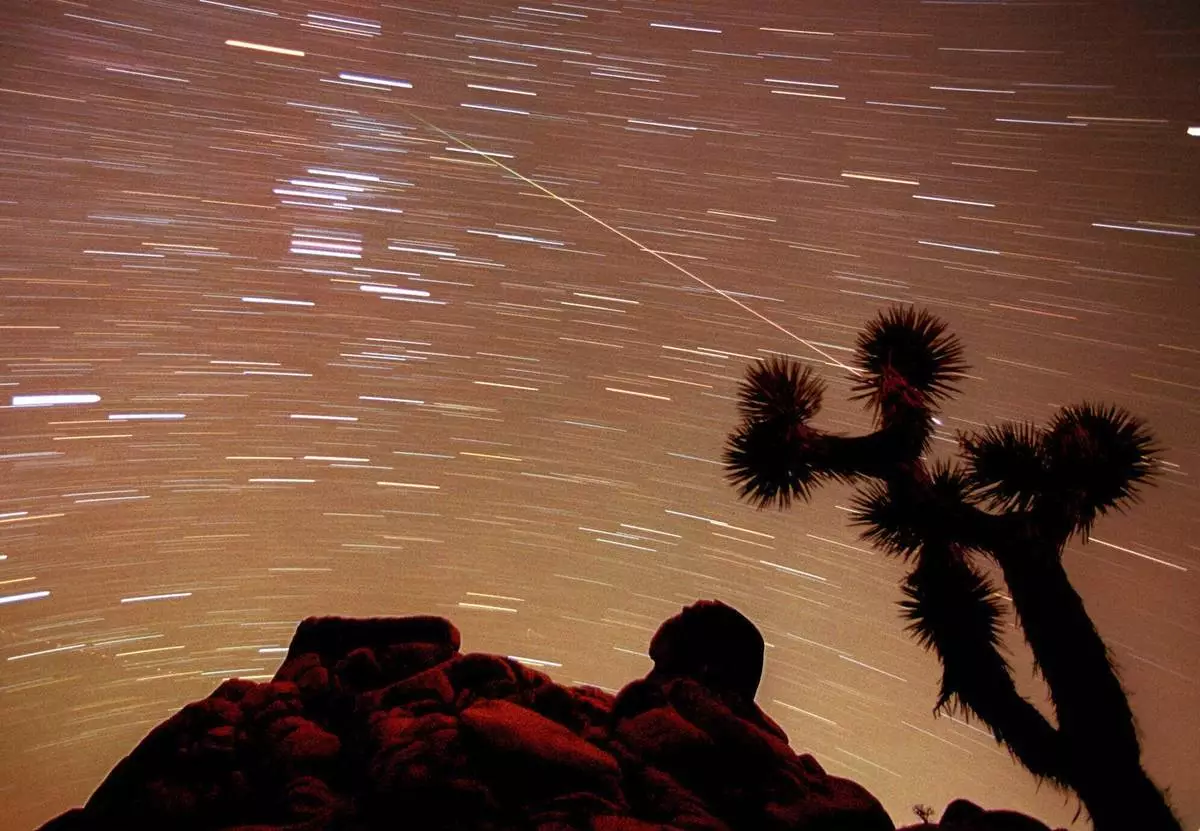
FILE - A meteor streaks through the sky over Joshua trees and rocks at Joshua Tree National Park in Southern California's Mojave Desert in this 30-minute time exposure ending at 1:15 a.m. PST, Nov. 17, 1998. Stars moving through the sky as the Earth rotates are seen as a series of short lines across the frame. (AP Photo/Reed Saxon, File)

FILE - This photo provided by NASA shows an Eta Aquarid meteor streaking over northern Georgia on April 29, 2012. (B. Cooke/Marshall Space Flight Center/NASA via AP, File)








